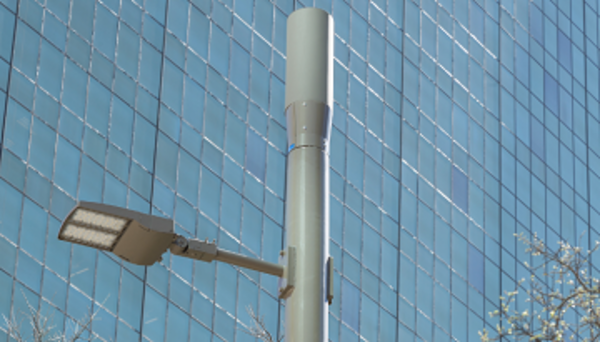
- Lighting
- Transportation
- Parking
- Safety and security
- Waste management
- The environment
A long time ago, you could make a phone call using a phone booth. I especially recall the red telephone booths used in the United Kingdom. After the cellphone was introduced, no longer were the famous red telephone booths (or any phonebooths) needed to make calls.
CLICK TO TWEET: Jan Honig explains that with 5G implementation, densification of small cells using smart poles will be needed.
The same scenario is about to happen with the lamp posts. The first lamp posts required a lamplighter to light each lamp. Now, they use LED bulbs. All sorts of benefits come with the use of LEDs such as energy/cost savings and longer lifespans. Exit the phonebooths and lamp poles and enter the smart pole where the functionality of a streetlight (producing light) will remain but other functions will be added to the pole.
A smart pole is slowly being introduced to our cities to be used for communication purposes. In the not-to-distant future, 90% of the equipment loaded on or in these smart poles will be communication related. The remaining 10% might be used by the lighting. The communication requirements for a smart pole will cover some of the following elements:
- Security technology
- Networking technology
- Power technology
- Communication technology
- IoT technology
The question regarding the smart poles will be the ownership of the infrastructure. For years this infrastructure was owned by the local government. This meant high costs for the city. With huge investments to come and replacing standard lights with LEDs, the local government is looking for a different business case. Investors are discussing the possibility of smart poles as a service with city officials. The idea is that these investors will buy the current pole infrastructure from the local government and lease it back. For any future added services, a revenue sharing model will be agreed upon. This way the smart pole becomes a revenue generating vehicle for the city.
With 5G implementation on the horizon, densification of small cells using smart poles will be needed.
This raises the question with the local government: what will my street look like with all these smart poles equipped with so much gear? Consultancy firms have been given the task to examine this and come with a recommendation.
Within CommScope, we believe that integrated poles with the mentioned technologies that can be shared among the providers of the various services is a "smart" way forward in smart cities.
Additional resources:







